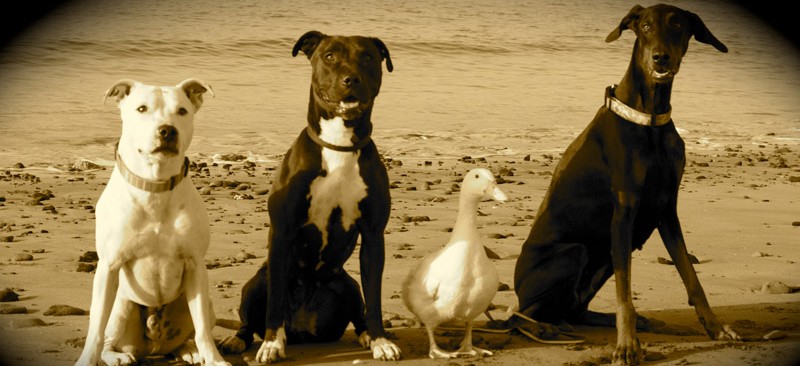Last month I wrote about the fact that I do think pit bulls — as a breed — represent a danger to public safety. It’s because when they bite people, they often do more damage than when other breeds bite people. And with that in mind, I think it’s appropriate for City Council to address that risk and look for ways to mitigate it.
But, is a pit bull ban the best or only way to address that challenge? That’s the question those of us on Council are wrestling with. So, before the vote on Wednesday evening, I wanted to share my thoughts on some of the arguments I’ve heard in support of ending Minot’s pit bull ban. Here we go…
Should I care about Dog Racism?
Is there such a thing as ‘dog racism’? This is the language that’s been directed at me, but perhaps it would be better referred to as breedism. The argument — as I follow it — suggests that because racism is bad when applied to people, that protection should extend to dogs when it comes to the various breeds.
Sorry, I’m not buying this. Dog breeds vary widely, and they exist because each was bred to develop specific traits. Some dogs were bred to sit on our feet and keep them warm in winter, and some dogs were bred to antagonize bulls and bears. The selection for traits best suited to these purposes resulted in dogs that have physical characteristics and behaviors suited to each.
So, acknowledging that different breeds exist, does not make one racist. I think it suggests that individual has a firm grasp on reality.
Nature vs. Nurture (AKA, It’s not the dog, it’s the owner)
This argument took a few different forms, but the gist of it was this: when dogs bite people, it’s not their fault. It was the fault of the owner because of how they raised the dog. And therefore, we shouldn’t legislate against the dog or the breed, we should legislate against the owner.
I have a couple of problems with this argument. First, in my experience and from the stories I’ve heard — I don’t believe it. There are too many stories about dogs that seemingly attacked their caretakers or children they’re familiar with in an unprovoked fashion. In other words, saying “it’s not the dog, it’s the owner” doesn’t line up with my own experiences and the stories I’ve heard.
But let’s say it is true, and that I want to use “it’s not the dog, it’s the owner” as the basis for my law. How do I write an enforceable policy that protects the public from ‘bad’ owners? How do I force — with a law written on paper — people to be good dog owners? One step further, how do we define being a good owner?
I think you can see the challenges framing our law on this concept starts to create. That said, I do think the dangerous dog ordinance is a good start down this path.
What’s a Pitbull?
Among the strongest arguments made by those who oppose our current pit bull ban is pointing out the challenges that come with enforcing it. Pitbull is a generic term that most often describes dogs that show physical traits associated with the American Pit Bull Terrier, American Staffordshire Terrier, American Bully, and Staffordshire Bull Terrier.
Minot’s law extends the definition as follows: Any dog which has the appearance and characteristics of being predominantly of the breed of bull terrier, Staffordshire bull terrier, American pit bull terrier, American Staffordshire terrier, any other breed commonly known as pit bull, pit bull dog or pit bull terrier, or a combination of any of these breeds.
So basically, if it looks like a pit bull, it’s a pit bull. The problem with our law is that it’s subjective. What looks like a pit bull to one person may not look like a pit bull to another. Even among those with pedigrees in animal education and professions, discussions on the definitive identification of breeds often results in agreeing to disagree.
That subjective clause is what makes our law difficult to enforce; it also creates a pile of administrative work for our animal control officers. And there’s the mental toll we place upon them by asking them to be a judge. With most laws on our books, it’s pretty easy to see the line and what side we’re on. Speeding is traveling above the speed limit. That’s illegal. Breaking and entering, that’s easy; are you in a place you’re not supposed to be?
But with pit bulls, it’s not easy. And making that call will often result — as most dog owners would attest — in the separation of a family member. That’s a lot to ask of an animal enforcement officer. So, yes, if I support keeping a pit bull plan in place, I must acknowledge the workload I’m creating for animal control officers.
The Higher Perspective, Is Minot a Welcoming Place?
Another argument that’s been made — and one that resonates with me — is what message do we send to those looking to locate or move to Minot? The laws we make send a message about the type of place we live in. For those of us living here, we’re so used to them that we don’t give them a second thought. But for those new to Minot, our laws may come across as overly restrictive or even backward.
Anybody remember the movie Footloose? Now, I don’t equate dancing to a pit bull ban, but whether I’m right or wrong on this issue will depend on which direction our cultural norms progress. That said, I don’t think we need to be like everywhere else, but we do live in a place where we struggle with perception. We do live in a place where we’re hungry for growth. And in round about ways, all the decisions we make on Council are connected to all the other decisions. The challenge is striking the best balance.
The Fence and Where I’m Leaning…
I said I’d give you a sense of where I’m leaning, so here you go. Dogs of any breed can be dangerous. I know that from my own experiences, so I see myself supporting a dangerous dog ordinance. To me, it’s appropriate that we formalize the way we handle these situations, and Fargo’s law strikes me as a good starting point.
That said, Minot’s pit bull ban is the status quo, and to justify changing or removing it I need to be convinced that it’s not doing anything worthwhile. In other words, I need to be convinced our policy is not keeping us safe. Or, I need to be convinced that exchanging our policy for a different one will result in keeping us safer.
Right now, I’m not convinced of either of those. I’m open to the possibility of both being true, but I’m not over the hurdle. Whether the security delivered by our current pit bull ban is real or perceived — I’m not, and I don’t think the citizens of Minot are ready to let it go.
And yes, a dangerous dog ordinance may be the better way to handle these situations. But I don’t think we’ve proven that to be true, yet. What I support is a mixed policy, for at least a little while. If the dangerous dog ordinance is the better method for handling pit bulls, then let’s prove it to ourselves. Let’s implement the ordinance and see how it handles dangerous dogs — whatever their breed. If it’s successful, then perhaps there’s a day in our future when we can revisit removing our pit bull ban because we’ll know we have a better alternative.
In other words, when it comes to removing our pit bull ban, I want to walk before we run. If you’re curious how the rest of City Council feels, our meeting is this coming Wednesday at 6:00 p.m.
And for those of you who have strong feelings one way or another, the comment section below is a great way to be heard.



